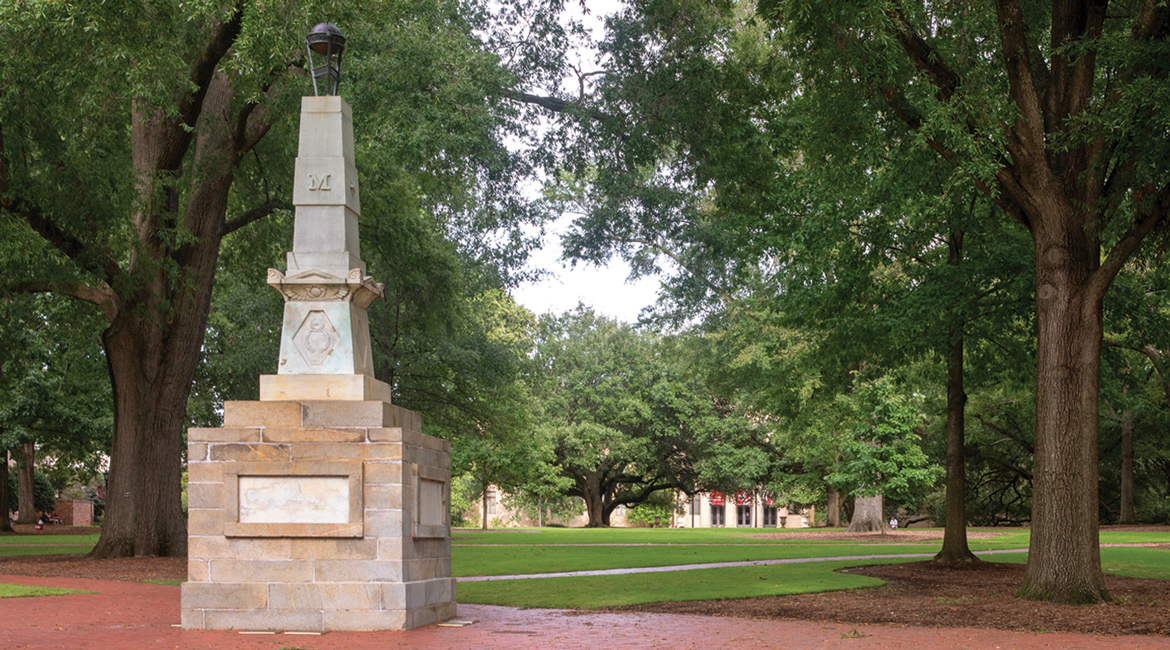 2018
2018
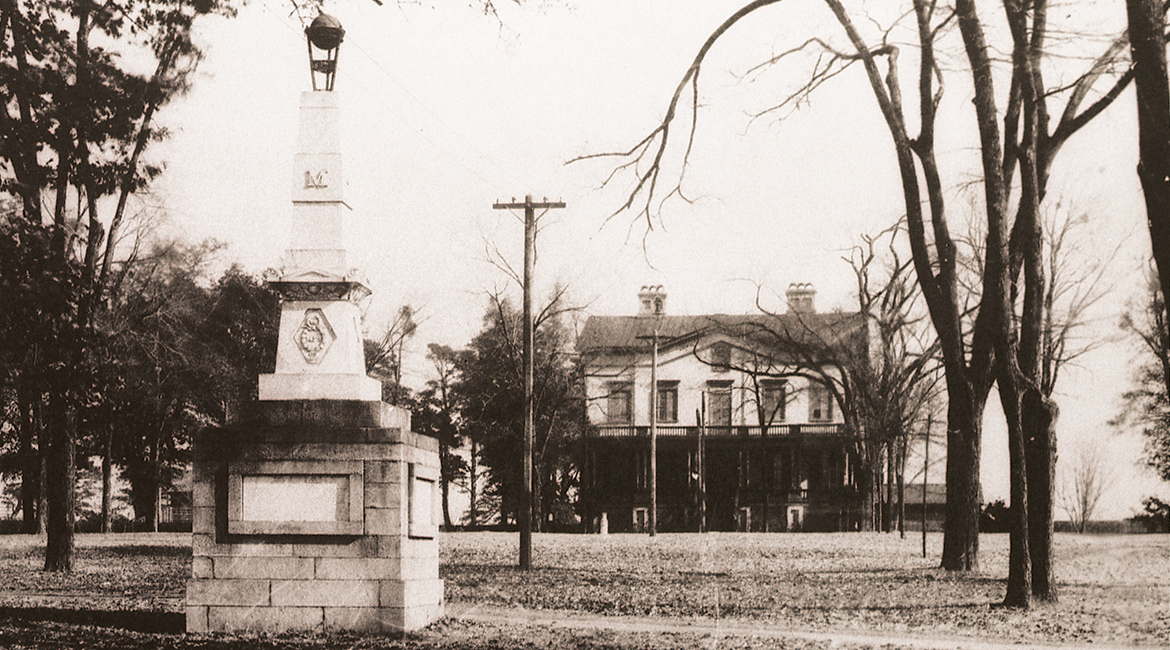 1905
1905
Then&Now
Campus changes, history remains
By Craig Brandhorst and Chris Horn
As an urban campus with a 217-year history, the University of South Carolina has undergone its share of architectural changes. Buildings have been demolished, remodeled, renamed — and once, in the case of Flinn Hall, picked up and moved. Streets have been closed to accommodate construction; streets have been extended, altering campus boundaries. The landscape has changed and changed again.
Don't believe it? Stroll through the heart of campus. Start at the Horseshoe, amble onto Gibbes Green. Wander down Sumter Street, cross Davis Field. There's history at every turn. You may need an expert to help you see it all, but it's all still there — even its absence.
To open our eyes to the invisible, USC Times enlisted Lydia Mattice Brandt, associate professor in the School of Visual Arts and Design, who has used campus as an “architectural lab” in her graduate-level American architecture class every spring since 2015. We checked our facts with university archivist Elizabeth West, who also steered us to the worst campus dining of the past 200 years — and helped us appreciate just how far we've come.“I have never done anything that captured so many people's curiosity,” she says.
The Horseshoe
Brick sidewalks, a leafy canopy, antebellum structures, stucco facades — a range of visual elements make the historic Horseshoe feel both timeless and intentional, as though USC's founders actually envisioned it gracing the cover of an admissions viewbook or hosting ESPN College Gameday.
But today's Horseshoe isn't the Horseshoe students and faculty walked in the 19th century — and it wasn't until the latter part of the 20th that anyone truly experienced it as unified architectural space, according to Brandt, who credits her students' extensive research with informing her conclusions.
“Before the renovations of the 1970s, the Horseshoe wasn't considered as coherent a composition as we think about it today,” says Brandt. “Now, the trees tie it together and help mask the architectural differences, but the buildings are actually different quality brick. The stucco also helps unify the appearance and makes everything feel connected visually.”
That's right. The Ionic columns, classical entablature, stately dome and other ornament of the present-day museum and Visitor Center (originally the main library) might have been lifted from antiquity, but it took federal funding through the New Deal to set them in stone. Previously, the Horseshoe was crowned by something considerably smaller, the original president's house, which was demolished in 1939.
Situated closer to the Horseshoe's curve, and with a footprint barely as wide as the front steps that now lead to McKissick's front door, the old president's house served as the terminus to a shorter Horseshoe than the one we enjoy today.
“The scale of the old president's house was never going to work as the head of that composition,” says Brandt. “The other thing that most people don't realize is that Bull Street used to go straight through, right behind the campus wall.”

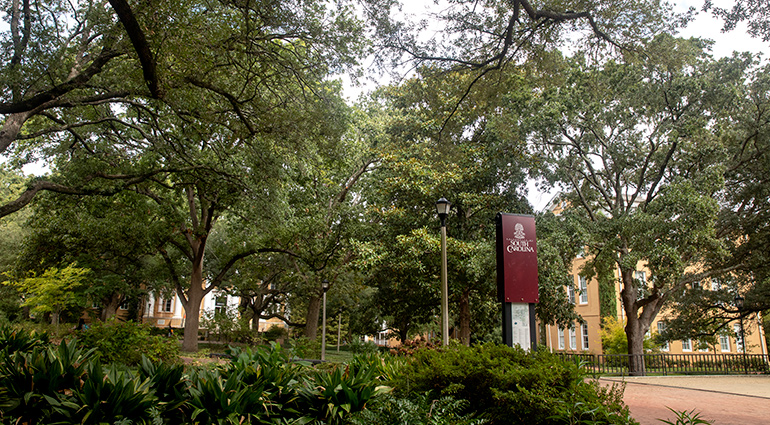
Gibbes Green
If the Horseshoe was the campus cradle, the development of Gibbes Green marked the institution's transformation into a modern university. South Carolina College became the University of South Carolina in 1906, and the first building on Gibbes Green, Davis College, was completed three years later, in 1909. The original LeConte (now Barnwell College) opened at the other end of the block in 1910.
But Gibbes Green circa 1910 had a different relationship to its surroundings. For its first two decades as part of campus, getting there from the Horseshoe meant crossing Bull Street, which wasn't closed between Pendleton and Greene Street until 1927. Prior to 1910, when Pickens Street was extended south of Pendleton, houses stood along its eastern edge.
And before that? The original Gibbes Green consisted of three separate parcels and stretched from Pendleton Street to a now-nonexistent stretch of Devine Street between the present-day sites of Sims College and Patterson Hall. Though the university had purchased the property in the 1830s, neighborhood residents used it as a park, complete with baseball diamond and playground, until President Benjamin Sloan put down golf links in 1904, partly to fend off claims that the property was abandoned.
You'd never know it now. The current Gibbes Green is smaller and better maintained. It's also differently oriented, bleeding into the Horseshoe as if by design, though close inspection reveals a different aesthetic than what sits on the other side of McKissick.
“If you took away all the trees, the buildings on Gibbes Green actually talk to each other architecturally pretty well, they're in conversation,” says Brandt. There's also an aspirational quality to the architecture, which she puts in the same tradition as Ivy League campuses like Harvard and Yale, and, before that, the English quads of Oxford and Cambridge.
“That space was intended to give the university a campus feel according to what people in the early 20th century thought a campus should be, and that was a quad,” says Brandt, who plans to teach a class on Gibbes Green in the future. “They really wanted to build up USC in the guise of a northern university — 'Let's look like a college' — because at that time the Horseshoe was looking pretty rough.”
And the university wasted little time. Compared to the Horseshoe, which took roughly 135 years to complete, Gibbes Green came together in just over 40, with the final structure (the present-day LeConte) opening in 1952. The area also benefited from a more focused vision, as half its structures (Petigru, Sloan, Melton Observatory, the second LeConte) were designed by a single person, J. Carroll Johnson, USC's first resident architect.
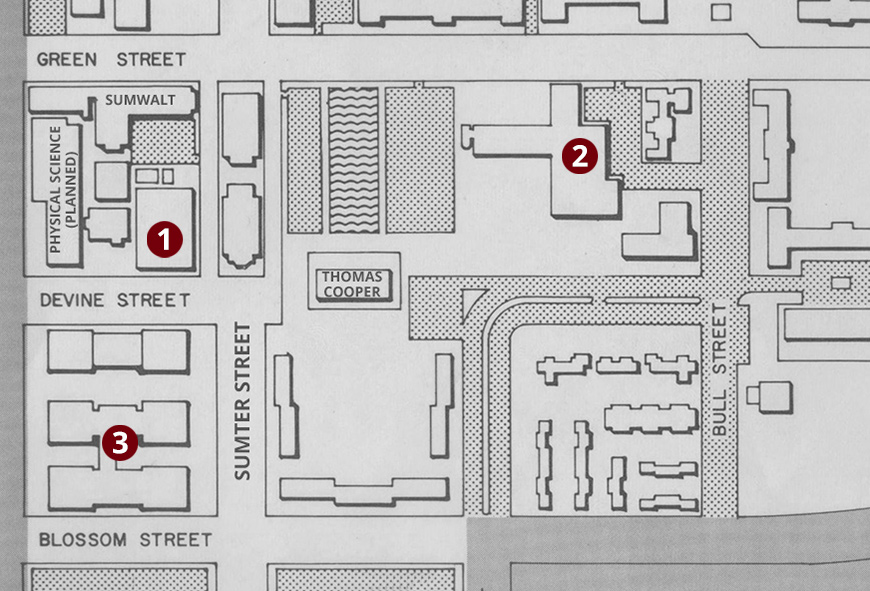
Campus in 1965
In 1965, the Gamecocks still played basketball in the Field House (1), which burned down three years later. Elsewhere, the Russell House (2) had yet to be expanded east along Greene Street, the health center still stood at the corner of Greene and Bull, and the Honeycombs (3) still dominated the block now occupied by the Center for Graduate Science Research and the Honors Residence Hall.
Sumter Street Corridor
If Gibbes Green was the center of growth in the first half of the 20th century, Sumter and Greene streets experienced the most dramatic transformation in the 1950s and early 1960s.
The Sumter Street redevelopment that began in 1952 with Sumwalt gave rise to nearly a dozen new buildings over a quarter century, including the six now-demolished Honeycomb dormitories (where the Honors College Residence and John M. Palms Center for Graduate Science now stand), McBryde Quadrangle, Jones Physical Sciences, Coker Life Sciences and Coker College (renamed the Health Sciences Building in 1976; more recently renovated for the School of Journalism and Mass Communications).
Completed quickly as USC raced to keep up with a burgeoning student body after WWII, the concrete, steel and modern brick structures between Sumter and Main streets reflect a different aesthetic than anything that came before.
Prior to 1952, faculty houses lined either side of Sumter Street, from Lieber College to Greene Street. The land now occupied by Coker Life Sciences was home to the Field House, where the Gamecocks played basketball until back-to-back fires necessitated its demolition in 1968. The adjacent parcel, home to the 185,000 square foot Jones Physical Sciences Building since 1967, was a parking lot.
But the Sumter Street site that most fascinates Brandt is on the south side of Greene Street between Sumter and Main, where Sumwalt (or some version of it) has stood since 1952.
“The university was buying little lots here and there,” says Brandt. “If you look at Sumwalt, you expect it to be symmetrical, but if you stand at Wardlaw and look across Greene, it's not. That's because it was built in three different phases over 10 years. It took that long for USC to buy that whole block.”
So, what previously stood on this end of the block? More homes, a fire station repurposed to house chemistry labs, and, at the corner of Sumter and Greene, the third location of Steward's Hall, USC's dining facility from 1902 until its demolition in the mid-1950s.
“The most interesting aspect of that part of campus, from my perspective as an architectural historian, is Steward's Hall,” says Brandt. “It was a pretty dumpy building, and it wasn't nearly big enough to serve the entire campus population once it started to expand post-GI Bill. It was also known for having terrible food.”
Steward's Hall's reputation began at its prior address — at the northeast corner of Greene and Main, on the block now dominated by Wardlaw. The converted house at that corner, where students were required to dine from 1848 to 1902, was roundly criticized for serving subpar victuals and, in 1852, was the site of the infamous “Biscuit Rebellion,” a protest so serious that roughly half of USC's 199 students pledged to withdraw from school if the dining situation didn't improve — and many followed through.
But the maligned mess hall hung on, moving across the street and down the block while the university debated investing in a dedicated student center. Eventually, USC joined the national trend, constructing the first phase of Russell House in 1955 and ushering in a new mindset with regards to student experience.
“There was a big controversy about whether or not USC should spend all this money on a building just for students to hang out,” says Brandt. “If you want to find the beginnings of the 'country club-ization' of the American college campus, it happens in the '50s with student centers, when students start seeing themselves as customers.”
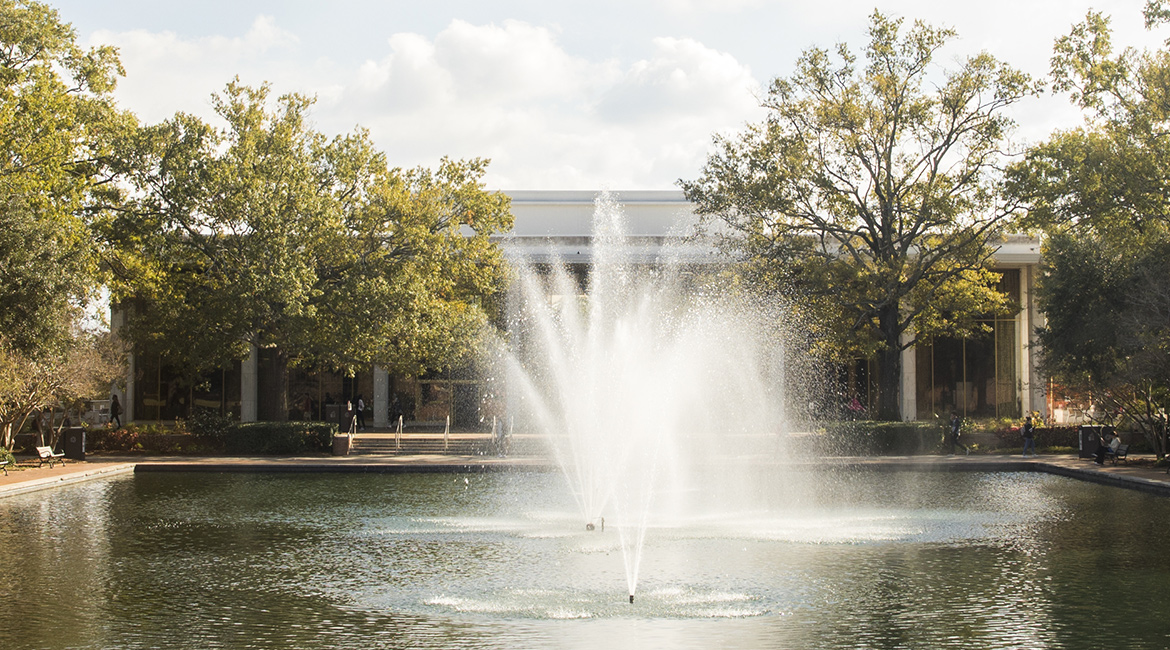 2018
2018
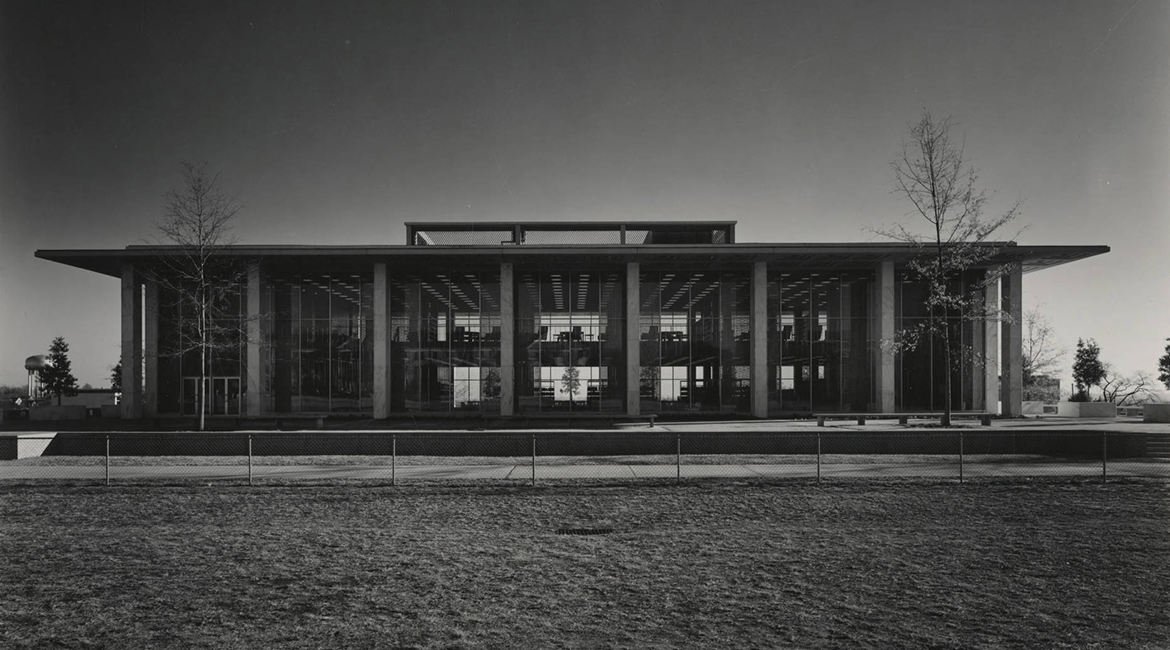 1959
1959
Davis Field
Before Russell House was built in the 1950s, Davis Field was a venue for outdoor athletics and recreation and stretched east along Greene Street from Longstreet Theatre to Melton Field (near the current location of the Russell House), where Carolina played football. By the 1930s, games were played at Carolina Stadium, which was later expanded and rechristened as Williams-Brice. Davis Field remained a recreational field and marching ground for ROTC into the 1950s.
“When USC was trying to expand in the 1950s after WWII, there was a big problem because the university didn't have the money or the infrastructure to purchase large quantities of land,” Brandt says. “They had to use land they already had, and that's how they ended up building on the ball field.”
Construction of the Russell House took away the east end of Davis Field, and the field's midsection was replaced by the reflecting pool during the second construction phase of Thomas Cooper Library. On either side of the pool, new coin-metered parking lots were added, mainly for student use.
“It's crazy to think of all of those cars on what is now green space, but cars as an eyesore on campus is a very recent concept,” Brandt says. “When you look at the old pictures of Bates and Cliff Apartments, that giant expanse of parking lot that we see today as hideous — that was a point of pride in the '70s. It showed that the university was modern, that there was an opportunity for parking.”
Since the mid-90s, of course, universities have marketed the college experience differently, promoting “pretty campuses” and green space over surface parking. That's how Davis Field, or part of it, was ultimately resurrected.
“When those parking lots disappeared, that fit in with national trends by trying to make USC look less like an urban campus and more like a traditional college campus,” says Brandt. “Making Greene Street pedestrian friendly was a big part of that, too, and that's actually something USC students have called for since the '60s. All the palmetto trees that were planted this summer — those kinds of things have been discussed for a really long time.”
And while the old meter lots are now a distant memory — they disappeared some 20 years ago, along with the traffic snarl they created — the reflecting pool that once separated them is more visible than ever, an elegant centerpiece to one of the most prominent green spaces on campus.